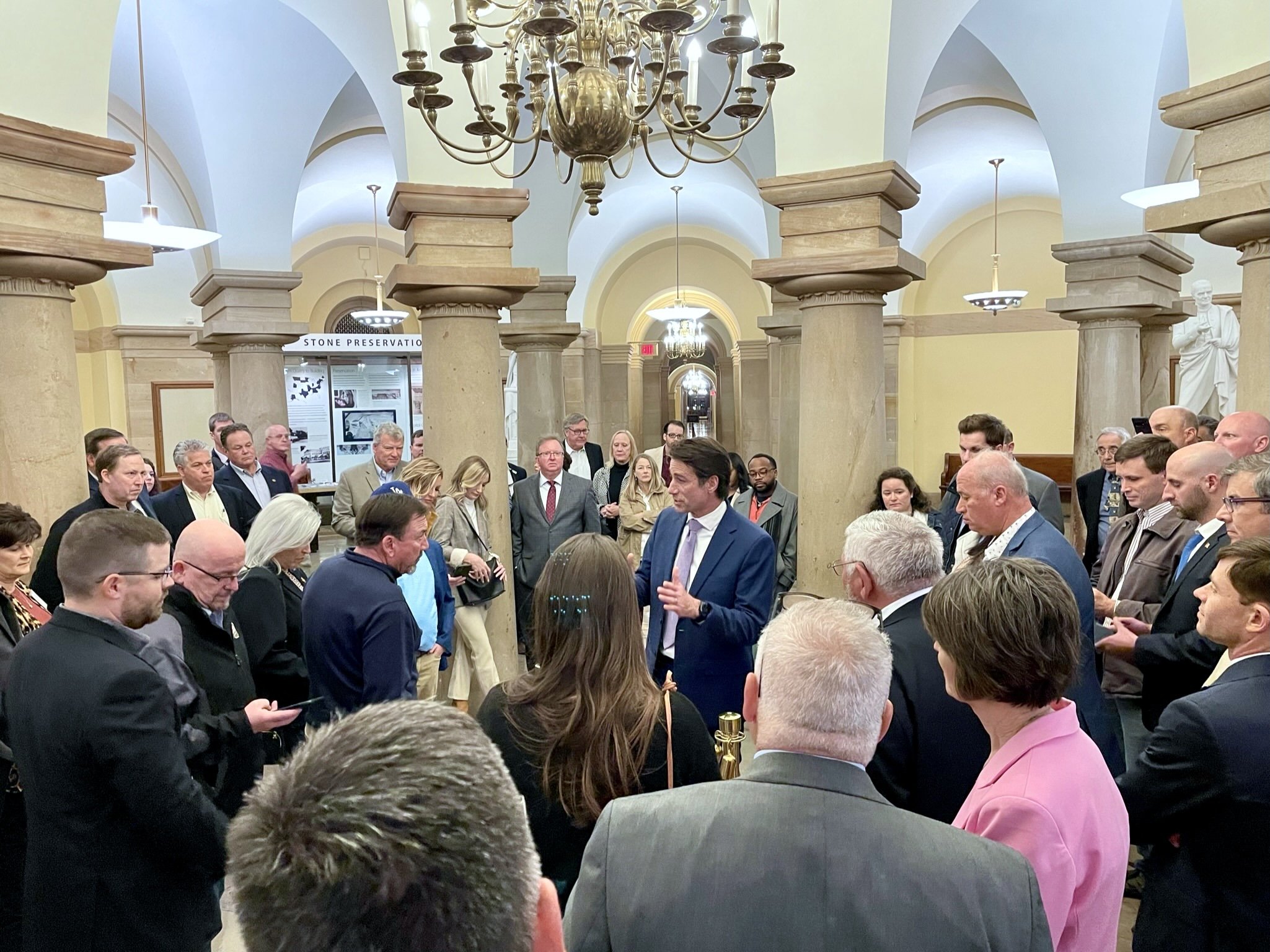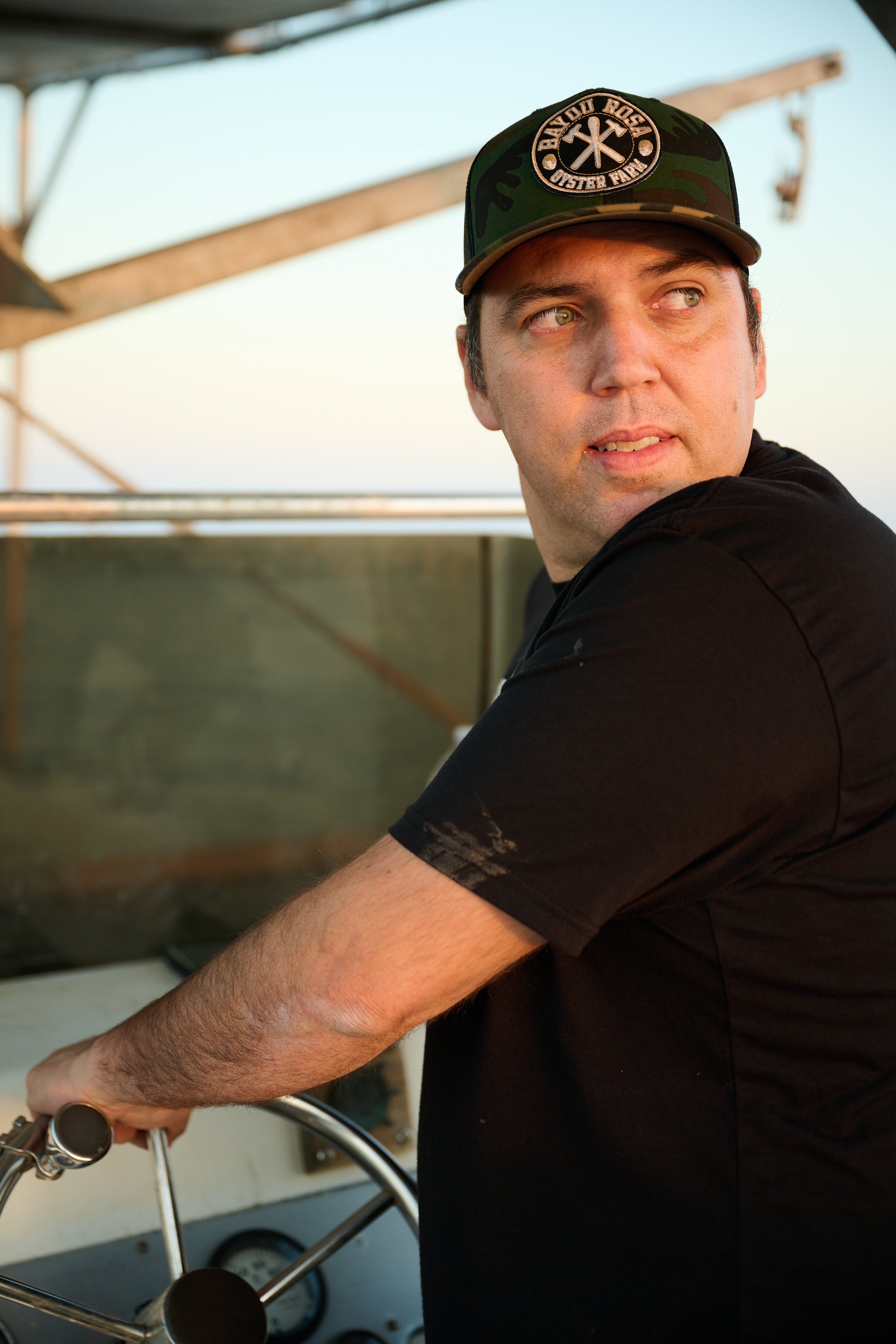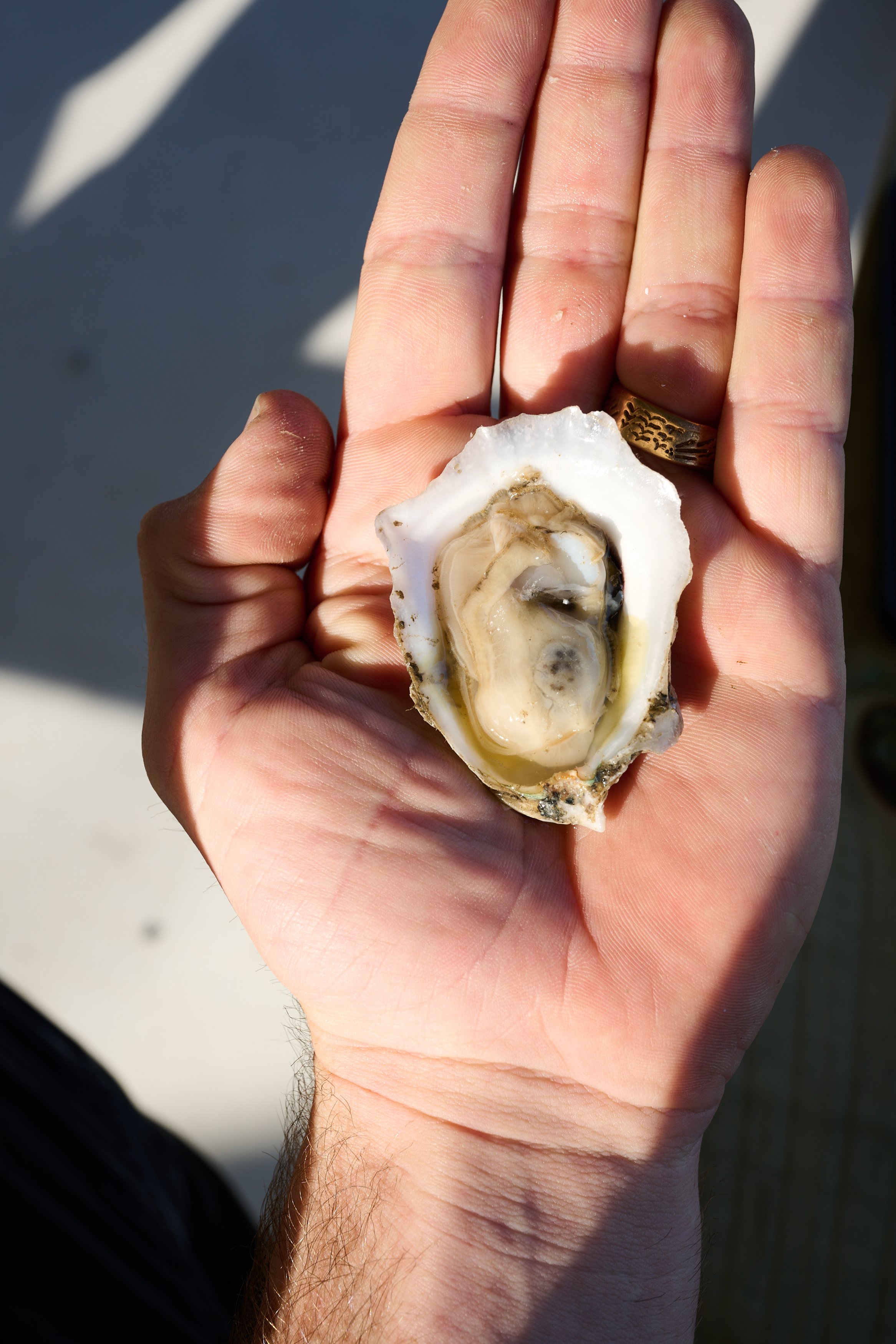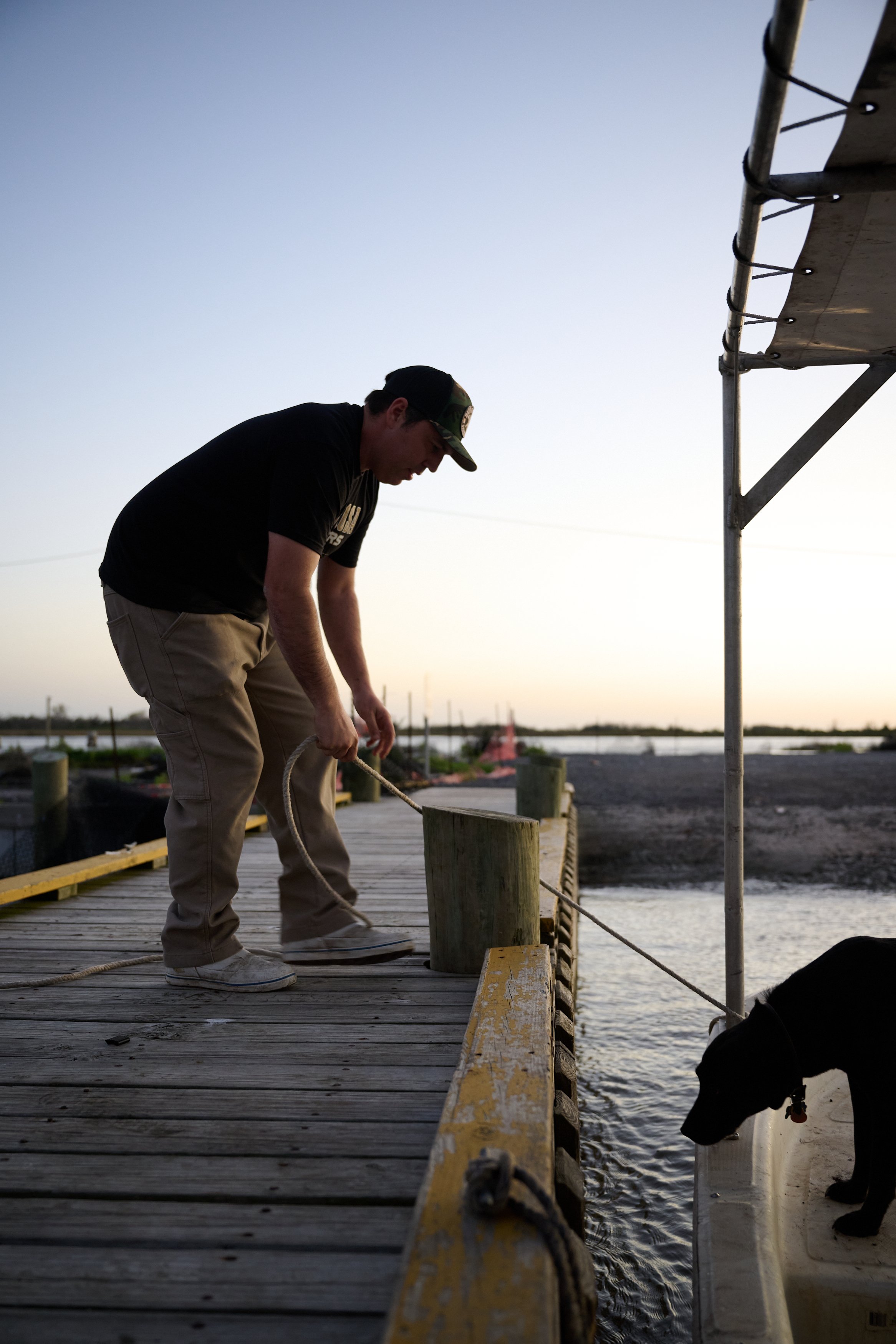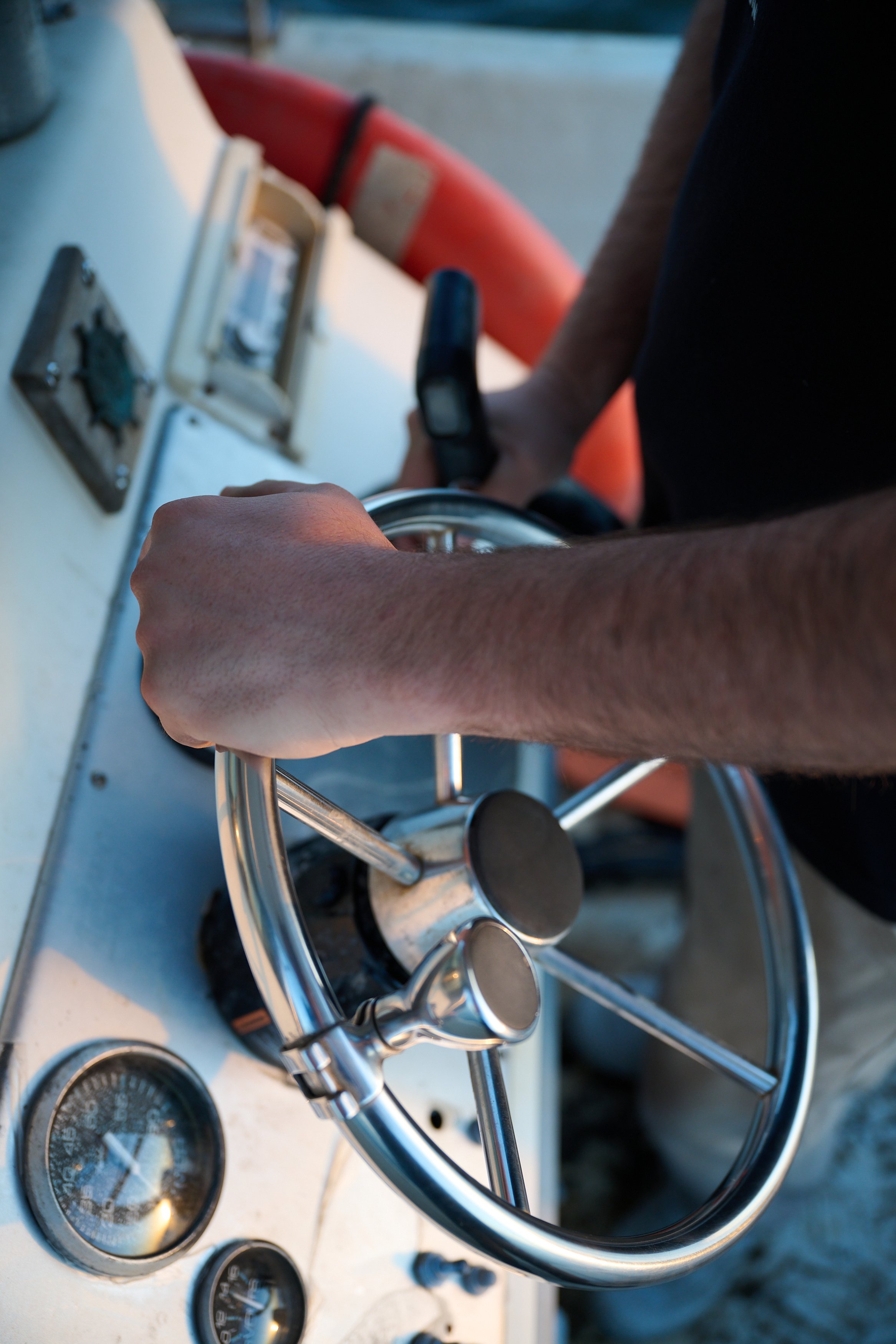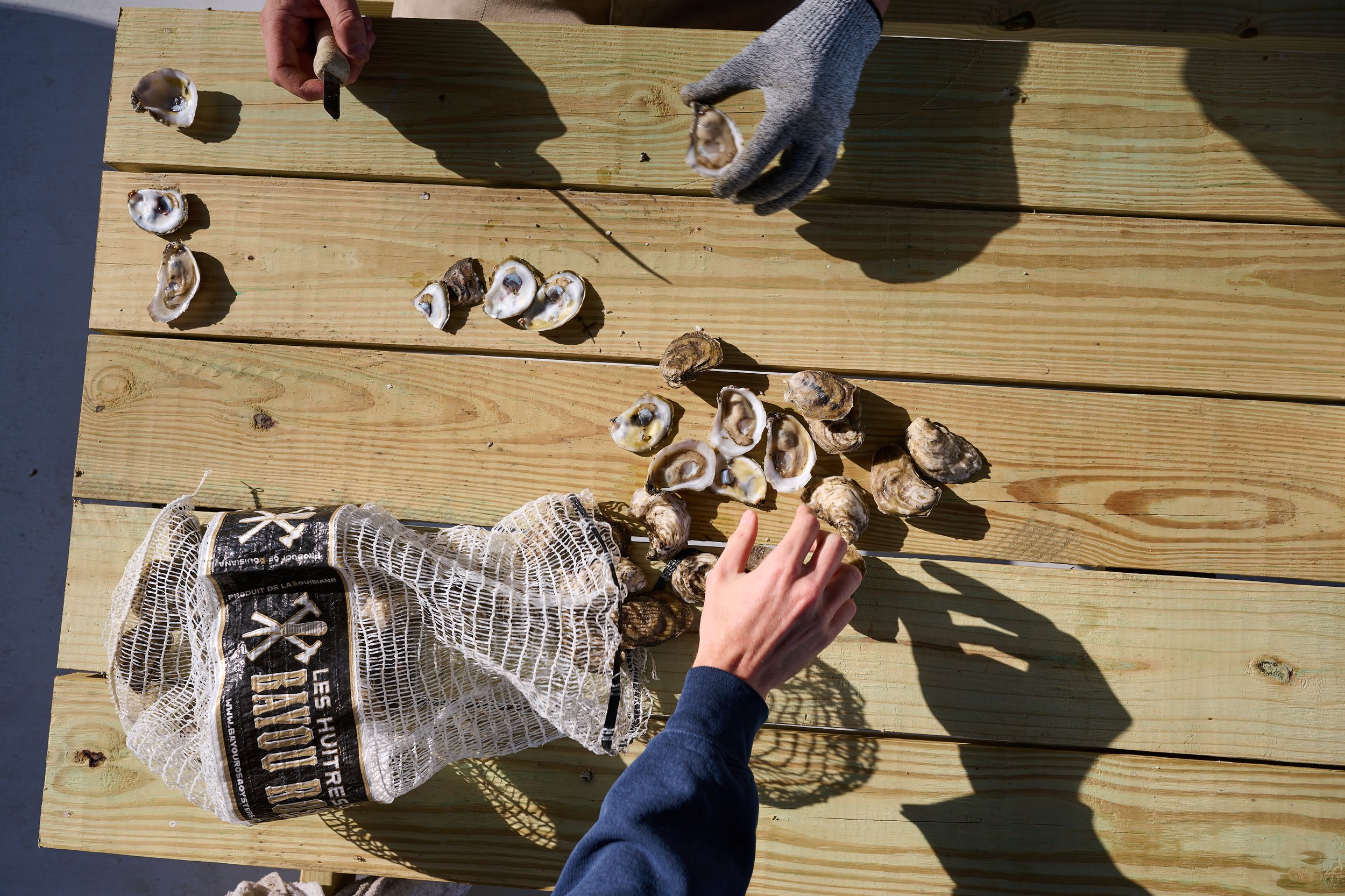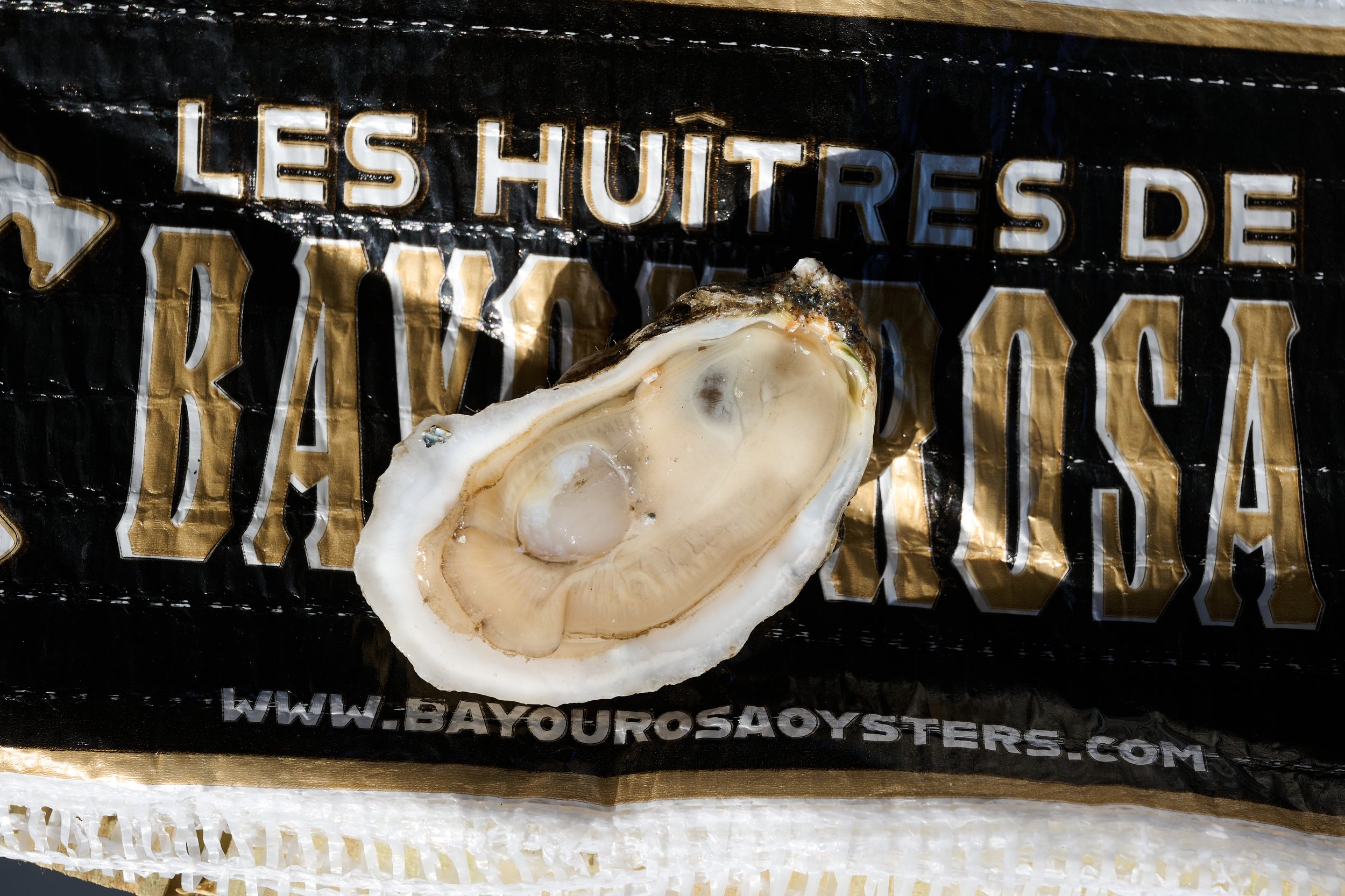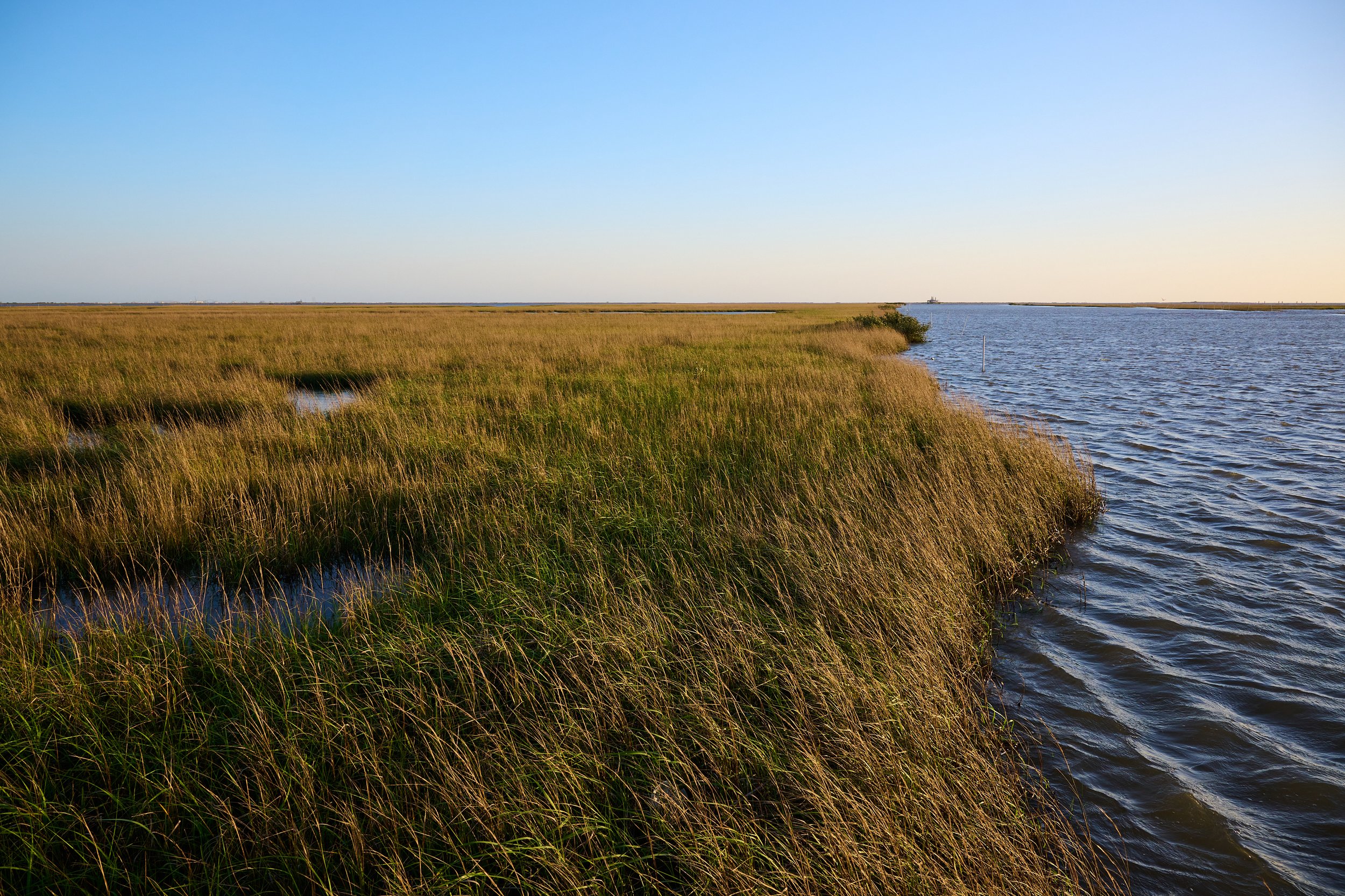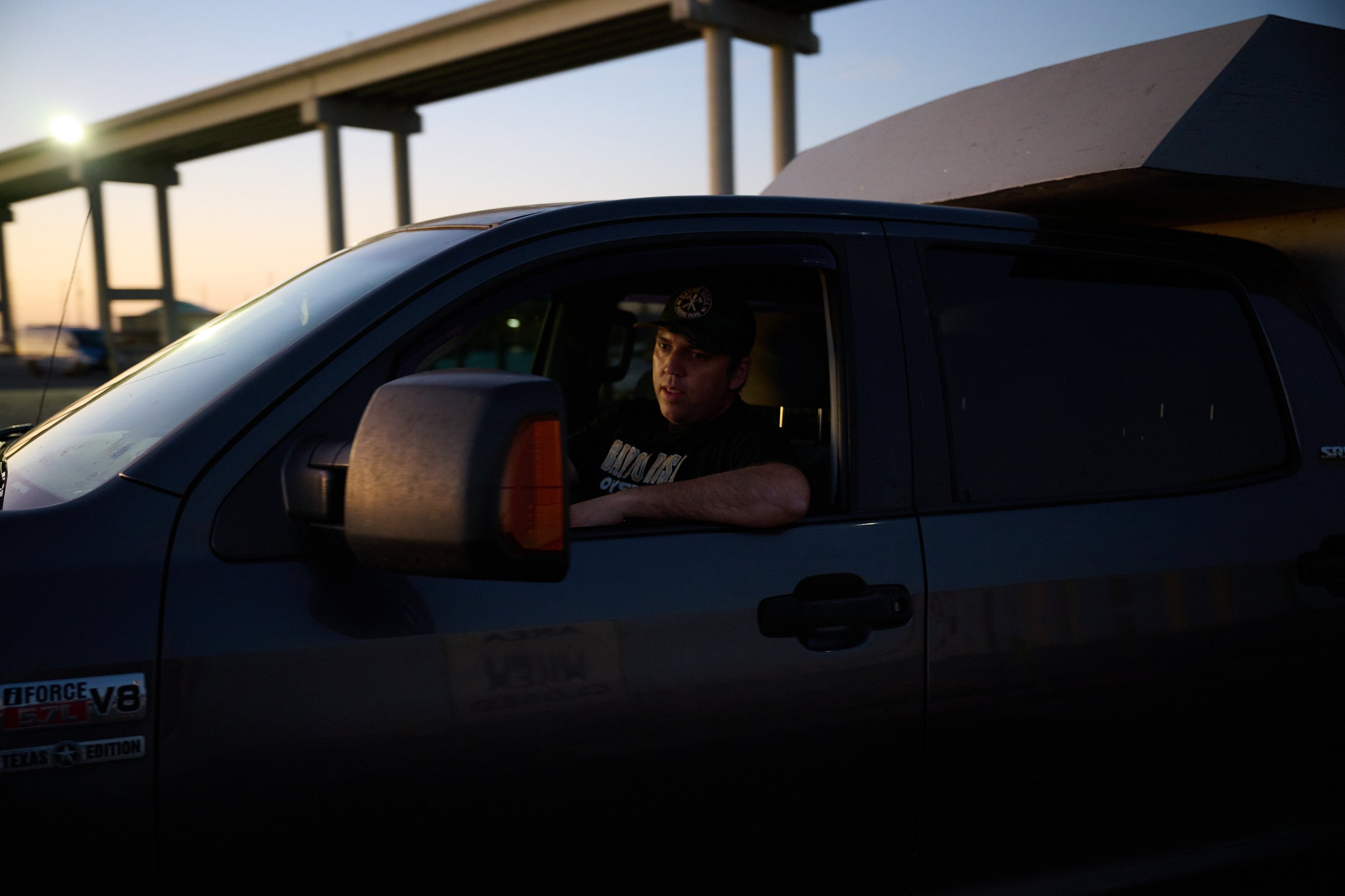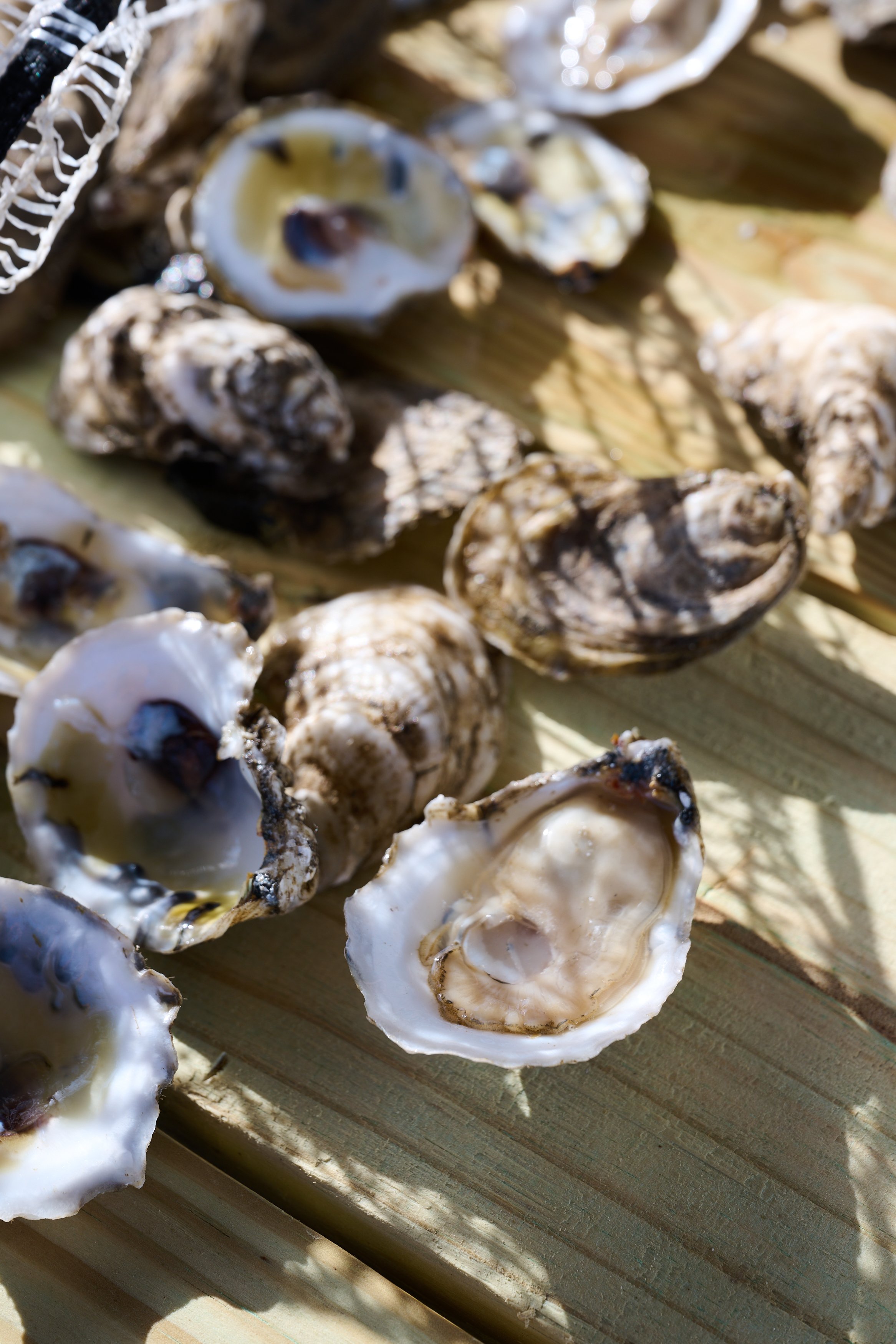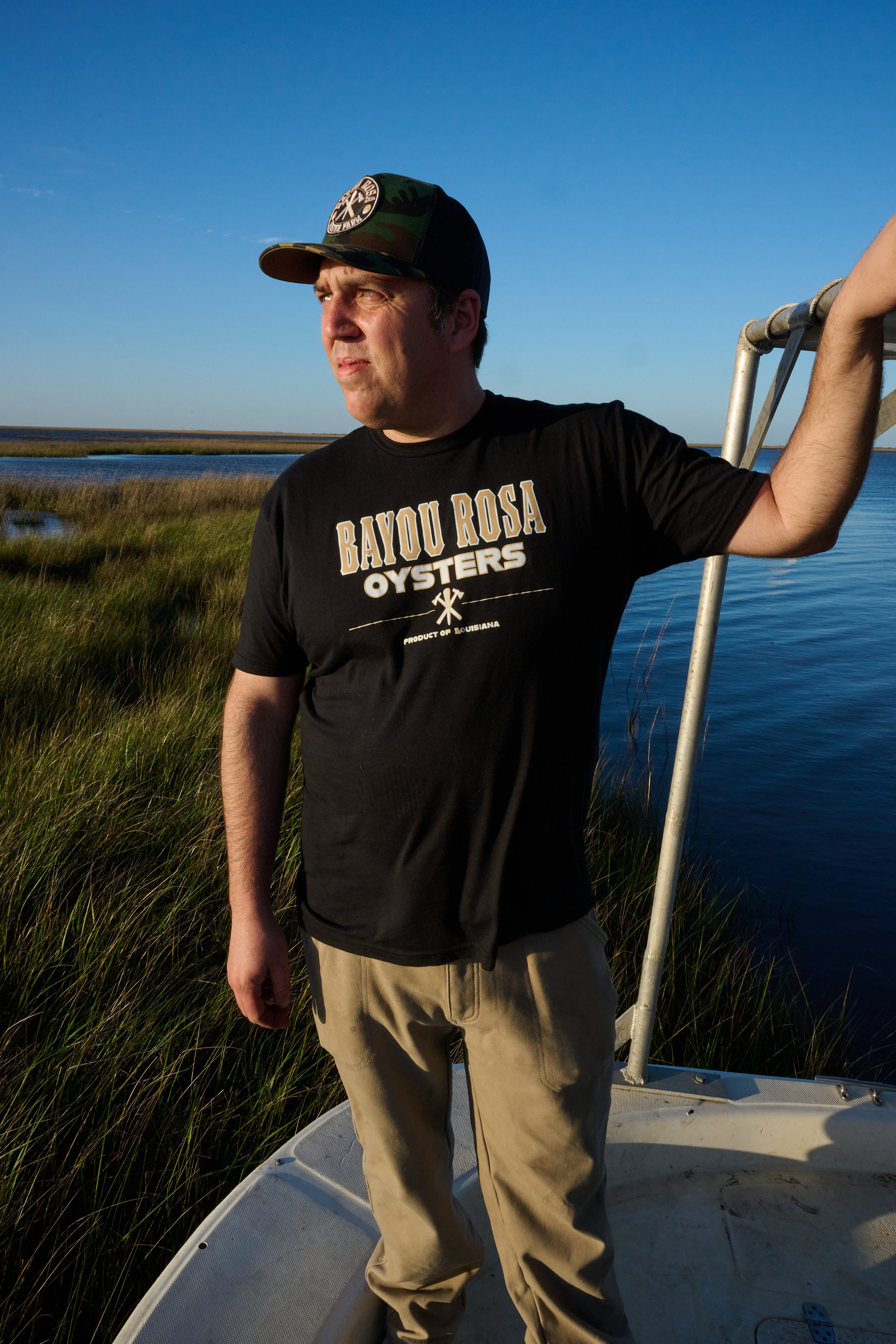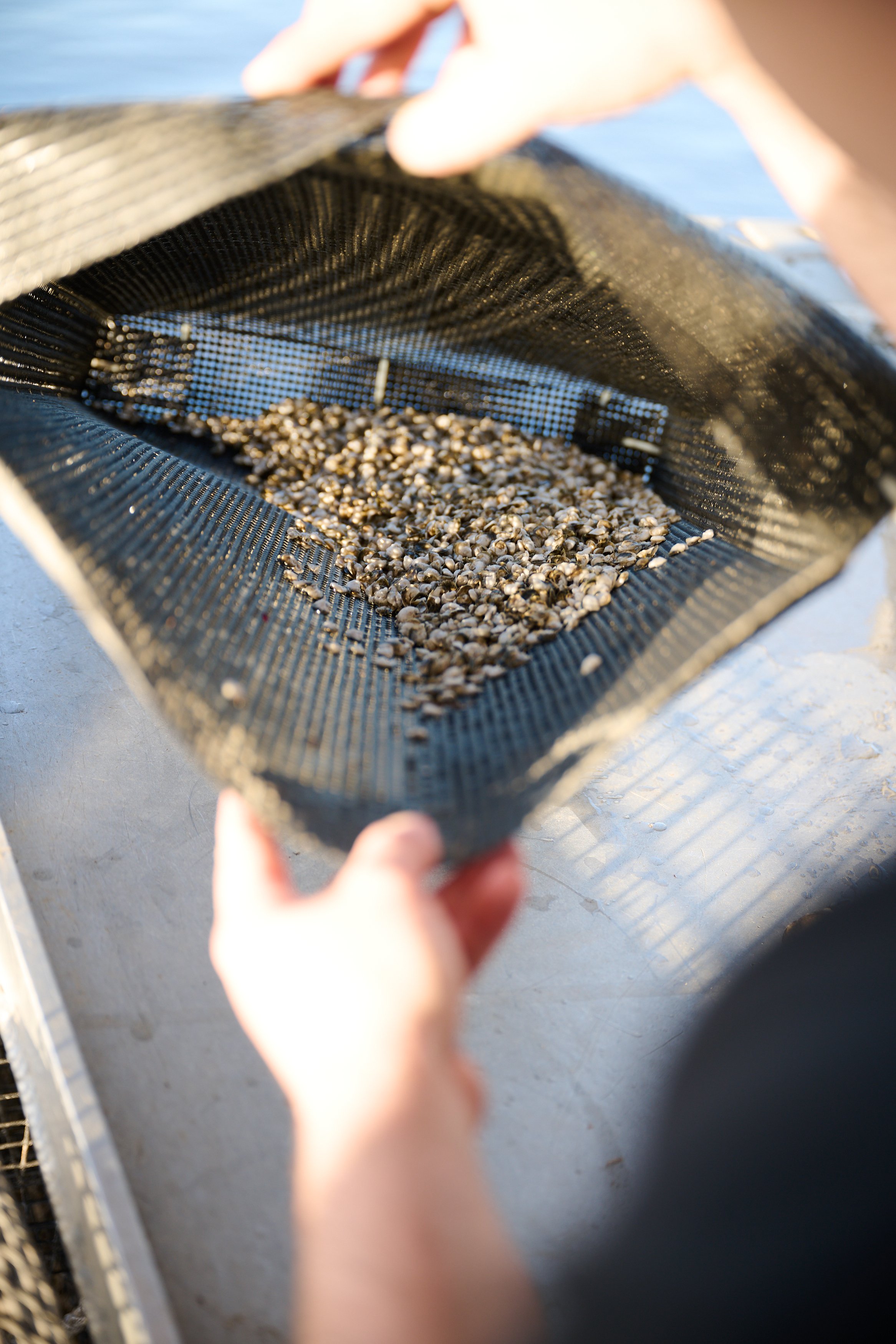Efforts Continue for Increased Coastal Revenue After Partial Win in Debt Ceiling Bill
The debt ceiling bill includes changes to federal law after an effort by local leaders, which will facilitate coastal restoration without increasing Louisiana’s share of offshore revenues.
The debt ceiling bill includes changes to federal law after an effort by local leaders, which will facilitate coastal restoration without increasing Louisiana’s share of offshore revenues.
Rep. Garret Graves, R-Baton Rouge, and Speaker of the House Kevin McCarthy, R-CA, meet with a bipartisan group of leaders from Louisiana in March to discuss the BREEZE Act. Will McGrew/Télé-Louisiane
By Jonathan Olivier
After weeks of negotiations between President Joe Biden and House Republicans, an effort led by Rep. Garret Graves, R-Baton Rouge, the Fiscal Responsibility Act was passed on June 3 to avoid a historic default on U.S. debt obligations. The bill also includes provisions that will work to speed up projects to protect Louisiana’s coast.
In addition to avoiding a financial crisis, the bill includes changes to the 1970s-era National Environmental Policy Act, or NEPA, which requires federal agencies to examine how large-scale projects will impact the environment, an approval process that can often take years. The bill narrows the scope of these reviews by placing a two-year limit on them without reducing any environmental requirements.
NEPA was created at a time when Louisiana’s coastal crisis wasn’t as advanced as it is today. Therefore, these updates to federal policy will allow the Coastal Protection and Restoration Authority (CPRA) to more efficiently tackle large-scale projects that involve some initial environmental impacts in the quest to actually protect and enhance coastal ecosystems, such as the Mid-Barataria Sediment Diversion.
“NEPA’s process has slowed down major ecosystem restoration projects because it was written with different assumptions about projects in mind,” said Neal McMillin, director of federal affairs for the Office of the Governor’s Coastal Activities division. “By allowing federal agencies to finally consider the cost of doing nothing, and to make decisions in a more timely manner, the NEPA reforms in the Fiscal Responsibility Act will allow the coastal program to better restore Louisiana’s coastal wetlands in a major way.”
The bill also clarifies and reinforces that shared revenues from offshore energy production are treated akin to state funds rather than federal, and this designation allows flexibility which can help to increase efficiency in executing coastal restoration or flood control projects. While this change is a partial win for local leaders, a bipartisan push to increase Louisiana’s share of offshore energy revenues continues.
Private companies pay the federal government fees and royalties in order to drill offshore. Through the Gulf of Mexico Energy Security Act (GOMESA), 37.5 percent of this funding is shared among the four oil producing states of the Gulf Coast: Louisiana, Alabama, Mississippi and Texas. These funds go toward coastal restoration projects, and local leaders would like this share to be increased to 50 percent—the level allocated to other states where oil and gas production occurs on land.
Garret Graves, R-Baton Rouge, discusses increased offshore revenue for Louisiana at the Capitol in March. Will McGrew/Télé-Louisiane
During previous negotiations, the Republican plan to raise the debt ceiling by $1.5 trillion called the “Limit, Save, Grow Act,” or H.R. 2811, contained an energy package that would have increased this shared revenue to 50 percent. House Republicans included in H.R. 2811 a previous bill dubbed H.R. 1 that was passed in March on a vote of 225-204, which included the text from the Budgeting for Renewable Electrical Energy Zone Earnings, or BREEZE Act, sponsored by House Majority Leader Steve Scalise, R-Jefferson, and Troy Carter, D-New Orleans. In addition to increasing revenue sharing from 37.5 percent to 50 percent, the BREEZE Act would also remove the $375 million cap on revenues transferred by the federal treasury to states and begin revenue sharing for offshore wind production.
Graves noted in an email that H.R. 1 is a critical piece of legislation for the future of Louisiana’s coastline. “Not only will this bill increase our domestic energy production, but it will also increase the resiliency funding our state and parish governments receive from energy development,” he said. “These local resiliency projects will drive down flood insurance rates, strengthen our region’s economic and ecological resiliency, and reduce federal disaster costs. This is a win-win-win that will protect our state’s communities, people, languages, culture, and our way of life.”
U.S. Senate Majority Leader Chuck Schumer, D-N.Y., called H.R. 1–a broad piece of legislation that includes a variety of energy-related provisions– “dead on arrival,” while the White House released a statement charging that the bill rolls back investments in clean energy made by Democrats.
Without increased revenue sharing, Louisiana will continue to lose out on billions from offshore energy leases compared to states that primarily produce onshore, which already receive a 50 percent share. If no further action is taken, Louisiana will also receive no revenue-sharing funds from its nascent offshore wind industry. Thanks to the debt ceiling deal, the increased revenue would all be considered state revenue and continue to be split between the state of Louisiana and its coastal parishes.
“The BREEZE Act levels the playing field for Louisiana and other coastal states, who deserve a fair share of the revenues generated from energy produced off our shores,” said Chip Kline, the chairman of the state’s Coastal Protection and Restoration Authority (CPRA). “Disasters like the Deepwater Horizon Oil Spill cannot continue to be our main source of funding for coastal projects. The revenue sharing improvements in the BREEZE Act would provide an additional $3.1 billion to Louisiana’s coastal program over the next decade, which is critical revenue that will help us continue implementing large-scale, transformational projects for decades to come.”
While H.R. 1 was passed on a party line vote, the BREEZE Act provision has broad, bipartisan support in Louisiana, including Governor John Bel Edwards. In March, a bipartisan coalition of economic and political leaders from Louisiana, including local governments and the CPRA, met with congressional leaders at the U.S. Capitol to express the importance of increased investment in Louisiana’s coastal crisis.
Matt Jewell, parish president of St. Charles Parish, was part of the group and said in an email that the bill has the potential to unleash American energy production, while further investing in efforts to protect the state’s coastline.
“Southeast Louisiana relies on funding made available through our offshore energy production to fund critical projects to restore and rebuild our vanishing coast,” Jewell said.
Washed Away
Construction of the Mid-Barataria Sediment Diversion is set to begin this year to restore wetlands, but the project will have adverse impacts on the region’s fisheries used by fishermen like Jason Pitre, a member of the United Houma Nation.
Construction of the Mid-Barataria Sediment Diversion is set to begin this year to restore wetlands, but the project will have adverse impacts on the region’s fisheries used by those like Jason Pitre, a member of the United Houma Nation.
Story by Jonathan Olivier | Photos by Jo Vidrine
Jason Pitre piloted his boat out of Bayou Lafourche near Leeville, speeding through marsh towards Little Lake where his oyster fishing grounds sprawl across seven acres. This particular lease goes back three generations in his family, last farmed by his late grandfather Antoine “Whitney” Dardar.
Back then, Dardar caught oysters from his pirogue just like his Houma ancestors had. He used a push pole to navigate the small ponds, canals and the nearby Bayou Rosa, the inspiration for Pitre’s current oyster business, Bayou Rosa Oysters.
As Pitre rode towards Dardar’s old fishing grounds, the wetlands that surrounded him would be unrecognizable to his grandfather’s eyes—Bayou Rosa is wider and degraded, and Little Lake has grown so large that today’s southwest wind lapped up waves that risked swamping Pitre’s 21-foot boat. Large expanses of open water have replaced nearby bayous, ponds and protected inlets, part of more than 2,000 square miles of wetlands that have disappeared in Louisiana since the 1930s. Scientists predict 4,000 square miles more will disappear in the coming decades if nothing is done.
As climate change worsens, hurricanes have become stronger, a reality that forced Pitre to move his family from his hometown of Cutoff to Raceland, a town farther north that is more protected from the Gulf of Mexico. Pitre, a member of the United Houma Nation, said other Native Americans in the region have made the same decision to abandon ancestral lands to escape the dangers of a vanishing coast.
“With each hurricane, people decide this is too much,” Pitre said. “So, the culture in the community leaves one area. It kind of gets dispersed. So over time, our traditions keep dying. As coastal erosion continues and the lands are diminishing, culture and history is slowly kind of washing away, too.”
The Coastal Protection and Restoration Authority (CPRA) has implemented various projects over the years to mitigate further damage to the region’s wetlands, part of the state’s 50-year, $50 billion Coastal Master Plan. This summer the CPRA is beginning construction on a project at a scale never before attempted—the $2.92 billion Mid-Barataria Sediment Diversion. The state will install a structure on the Mississippi River near Ironton in Plaquemines Parish that can open at certain times of the year, allowing 75,000 cubic feet per second of river water and sediment to flow through a 2-mile-long concrete channel into the Barataria Basin.
According to state officials, the project is poised to build 21 square miles of new land in 50 years, which will eventually represent 25 percent of all the wetlands left in the Barataria Basin by 2070. Officials expect the project will be completed in at least five years.
While the idea of building land sounds promising to a coastal inhabitant like Pitre, in an unfortunate twist of fate, the sudden influx of freshwater from the diversion will have “major, permanent, adverse impacts” on the oysters in the Barataria Basin, according to an environmental impact statement released by the Army Corps of Engineers. Sediment will cover oyster fishing grounds while freshwater will make many oyster beds in the basin unproductive. The diversion will also adversely impact brown shrimp populations while it’s projected that 97 percent of the 2,000 bottlenose dolphins in the Barataria Basin will die.
Pitre’s oyster lease is just west of Bayou Lafourche in the Terrebonne Basin, which borders the diversion impact area. Still, he fears he is close enough to the diversion that with an east wind he’ll see some effects, enough so that he’s concerned the future of his business is at risk.
“It's like accepting the fact that you have stage 4 cancer and you're going to die,” Pitre said. “Well, I'm going to at least try to live my life as long as I can.”
The Losses in the Barataria Basin
Between 1974 and 1990, roughly 5,700 acres per year washed away in the Barataria Basin due to a combination of factors: sea-level rise and natural factors like wind and wave erosion, but also the result of human activities. According to a recent study published in the journal Nature Sustainability, levees along the Mississippi River, plus oil and gas wells and canals, are the most prominent reasons why land in the Barataria Basin is vanishing. Drilling and then the canals dug to reach those oil wells caused erosion and subsidence issues. And without the freshwater and sediment that was once regularly deposited by the now contained Mississippi, the marsh continued to wash away without a way to rebuild.
Officials with the CPRA contend that the Mid-Barataria Sediment Diversion will mimic those natural processes that existed before the levees were constructed. Bren Haase, executive director of the CPRA, noted that the Barataria Basin is starved of freshwater and sediment, and the diversion will essentially breathe new life into a dying ecosystem. “A project like this is going to hit reset on that kind of fresh, salt water balance, which is needed,” he said.
Doing nothing is too great of a risk, Haase said, because without the diversion, issues would only be exacerbated. Scientists warn 550 square miles of marsh would disappear in the Barataria Basin in the next 50 years if nothing is done. Less marshland would leave coastal communities more vulnerable to hurricanes. The Barataria Basin would continue to lose productivity—according to the Army Corps’ assessment, half as many oysters and 30 percent fewer shrimp are caught in the basin compared to 20 years ago. Eventually, the oyster and brown shrimp industry would be crippled anyway.
Yet, the Army Corps report also noted that changes to the fishing industry in the basin will occur “decades sooner” with the diversion in place. Due to this reason, George Ricks, a charter boat captain from Plaquemines Parish and president of the Save Louisiana Coalition, is strongly opposed to the Mid-Barataria project. With or without a diversion, the fisheries in the basin will be permanently altered, but for Ricks, the difference is timing.
“If we don't do anything, in 50 years we're going to lose the fisheries anyway,” said Ricks, who has been an outspoken critic of the Mid-Barataria Sediment Diversion for years. “But give us that 50 years. Don't kill us now. And that's exactly what they're going to do with this project.”
Ricks would rather that coastal communities have more time to adapt to the changes occurring in the Barataria Basin. To combat land loss, he would prefer that the state dredge sediment and pump it into the basin to build land and barrier islands. The CPRA already employs this tactic across the coast, including in the Barataria Basin, but the agency doesn’t view it as a long-term, sustainable option. The diversion, on the other hand, would theoretically offer a seemingly endless supply of sediment from the Mississippi River.
Yet, if the idea is to build land, Ricks doesn’t see how 21 square miles of it built in 50 years is a suitable solution. Hurricane Ida, for example, destroyed more than 100 square miles of wetlands essentially overnight, much of it in the Barataria Basin. From his point of view, the expected benefits of the project aren’t worth the cost or the sacrifice that coastal communities will endure. Part of the Barataria Basin falls in Plaquemines Parish, which is home to the largest commercial fishing fleet in the continental United States. He pointed out that 70 percent of the oysters, shrimp, crabs and fish sold commercially in Louisiana comes from the fishermen in Plaquemines Parish.
“The minute they open the gates to this project,” Ricks said, “they're going to put people out of work.”
Finding Ways to Adapt
When the wind calmed and it was safe to put out a few traps in Little Lake, Pitre navigated to a spot on his oyster lease and readied a cage. In a bucket nearby he had hundreds of tiny oysters that he loaded in his cage before tossing it overboard. He uses a method to grow oysters called Alternative Oyster Culture (AOC), which features growing oysters in cages that are submerged yet suspended off the bottom of the marsh, instead of the more traditional method where oysters grow on hard surfaces underwater.
Rather than relying on wild oyster larvae, Pitre purchases thousands at a time that are grown at hatcheries, such as from Triple-N-Oysters that cultivates them miles from the sea in Baton Rouge. Since Pitre’s oyster cages either float or are suspended, there is a small element of mobility that he has which otherwise wouldn’t exist in more traditional operations that rely on underwater structures.
This flexibility means that he might be able to salvage Bayou Rosa Oysters when the diversion opens. He’s eyeing oyster leases that are farther west, which will likely have more stable salinity levels compared to his current lease. He’ll be able to pack up his traps, move to a new lease and have new oyster harvests in a relatively short period of time.
In a future with regular influxes of sediment-laden freshwater from the Mississippi River in the Barataria Basin, traditional oyster beds might be covered in mud. Pitre said since AOC doesn’t require underwater structures, it could provide some people who lose traditional oyster beds with a way to continue catching, as long as the salinity levels are right.
In order to mitigate the damage caused by the diversion to oyster beds and fishing grounds, as well as those who will be impacted by flooding, state officials are setting aside more than $370 million. Haase with the CPRA noted that part of this money will go toward incentives for AOC operations like Pitre’s, as well as opening new oyster fishing grounds wherever possible. “So, a person who might have an oyster bed that's in a place that would become unproductive because of the diversion can go and reseed and put cages down in an area that may be more productive,” he said.
Even still, AOC isn’t a fix to the anticipated problems of the diversion’s freshwater. “No matter how much money you give, if you completely turn the water fresh, I can't function,” Pitre said. “I can't do anything with that.” Plus, for Pitre, leaving his grandfather’s oyster grounds isn’t an easy decision to make. Catching oysters in Bayou Rosa isn’t a business decision, it’s one rooted in his heritage.
With or without a diversion, Pitre recognizes there will continue to be loss—of land, of culture, of language. More hurricanes will wash ashore and more land will vanish. People in his community will continue retreating north. Instead of giving in to feeling powerless, Pitre focuses on the one thing he can control—going out on the water every day and catching oysters.
“I’ll do what I can to keep the industry going because that's our identity,” he said. “We're losing so much culture, the French language, traditions. Fishing is one thing that I'm going to work my hardest to keep alive so that we can survive.”
A Fine Kettle of Crawfish: The Impact of Covid on Crawfish Season
Despite the difficulties of 2020, fishermen are optimistic about the outlook of 2021 and beyond.
Despite the difficulties of 2020, fishermen are optimistic about the outlook of 2021 and beyond.
David Durio at his crawfish pond in Arnaudville, Louisiana, where he owns 60 acres of ponds. Kathy Bradshaw/Télé-Louisiane
By Kathy Bradshaw
Probably more than anything else, next to the loss of life caused by Covid-19, most people are mourning the loss of social interaction and group activities. Due to the coronavirus, we have had to cancel our festivals, our parties, and our main social events—upending life as we have come to know it.
Yet, crawfisherman David Durio is cautiously optimistic about the future of crawfish this spring. He says that the forecast of mild winter is a good sign for their abundance and size. And if his catches so far are any indication, things look promising.
Last year, interruptions due to Covid-19 led him to cut his fishing season short, because all the restaurant closures took a big chunk out of his earnings. And even though he was still able to sell crawfish to grocery stores and other “essential” businesses that never shut down, as well as making private sales to individuals and families, it just wasn’t quite enough. Selling a sack or two of crawfish so a few families can each have their own backyard boils just isn’t the same as selling 450 pounds of mudbugs to several local eateries.
“I shut it down in May, mainly because the price was to the point where it was low enough for me to get out,” he said. “It wasn’t worth it for me to fish anymore.”
Durio is a small-scale crawfish farmer. He owns 60 acres of ponds in Arnaudville and catches anywhere from five to 20 sacks of crawfish a week, compared to some of the big-time farmers who might harvest as many as 400 sacks a week from 300 acres of ponds. Since Durio works full-time as an IT specialist in Laplace, fishing is more of a leisure activity, a labor of love. He does it for the joy of the catch and his appreciation of nature.
“It’s just the outdoors, the wild,” he said. “Just being out with the birds and the alligators and the snakes. The adventure. It’s the warmth of the sun on you in the summertime, and staying all bundled up during the wintertime.”
For him, crawfishing is a family business that goes back many generations: His uncle owns 200 acres of ponds and also taught crawfish management classes at the University of Louisiana at Lafayette. Durio himself learned the crawfish biz from his dad, who used to bring him out to the ponds, even when he was little.
Durio learned how to crawfish from his father, who began catching mudbugs in the 1980s. Kathy Bradshaw/Télé-Louisiane
“I grew up out here,” he said as he tied up a sack of freshly caught crawfish. “My dad used to take my brother and me out here every Sunday afternoon because my mom wanted to get us out of her hair. From the time I was a kid, I [fished for crawfish] on a very small scale, just to play in the ditch and stuff like that.”
He explains that his family began commercially crawfishing after a lot of local cattle farmers got out of the cattle business in the early 1980s and converted their land to ponds instead. Later, when Durio’s dad retired from crawfishing, he passed the torch to his son. Now, Durio has been at it for fun and profit for the past decade.
“About 10 years ago, my dad had retired, and he asked if I was interested in doing the crawfish ponds, and I said yeah. It was like coming back home, and I loved it. I remembered all those little weekend trips, when he would take us out here.”
During lockdown last year, while most people were cleaning out a closet or catching up on their favorite Netflix series, Durio used his spare time in quarantine to get in some more crawfishing. When his IT job went remote, he took advantage of the flexibility and good WiFi hotspot connection to work right from his crawfish ponds.
“I’d come here in the morning, and I’d log in and have my 9:00 meeting,” he said. Then, he could bait a few traps on a coffee break, or sort a few sacks of crawfish during lunch. “I was putting in an eight-hour day. I was just doing it remotely. Really remotely.”
But with Covid, sales were still down, and the communal love of crawfish was faltering—surely because the communal aspect was, in fact, being completely removed from the equation. Eating crawfish is really about the crawfish boil—the “congregation and the collaboration between the individuals, just the fun of everybody getting together,” as Durio described it. Crawfish are the glue that holds people together this time of year, and crawfish boils are a rite of passage in Louisiana. But with gatherings and group parties forbidden and risky, it just wasn’t nearly as much fun.
“It’s almost like the price went low, and come May, it was like people were burned out on crawfish,” he said.
Durio uses traps like these to catch crawfish from his gas-powered boat. Kathy Bradshaw/Télé-Louisiane
Covid didn’t only affect Durio’s business, it also really hit home. Last March, Durio’s father contracted the virus. After spending two weeks on a ventilator, the 93-year-old Durio Sr. miraculously recovered, only to pass away several weeks later due to complications. To make matters worse, Durio’s father got Covid in the nursing home where he had lived, which turned out to have the largest number of deaths of any nursing home in Louisiana.
“When he passed, the funeral was one of the first days that they actually opened up the church to a large crowd,” Durio said. “So he had one hell of a send-off. Since he was a veteran, he had the full armored guard with a 21-gun salute. The church was packed, and he deserved that.”
It’s a new year now, and we’re just beginning a brand new crawfish season. And despite the fact that the pandemic continues to drag on, not all is lost for crawfish farmers nor people who love to eat crawfish. Durio, for one, seems to be kicking off 2021 with confidence for a good season. “I think there’s a lot more hope, a lot more optimism [this year],” he said.
Even if it still isn’t safe to gather in groups, and even if most don’t feel comfortable dining indoors at a restaurant, there are still plenty of ways to enjoy both the flavor and camaraderie of crawfish, such as at a drive-thru crawfish joint.
“People will still be craving crawfish; you’re just going to get them and boil them in your backyard instead of going and getting them at the local restaurant,” Durio said.
With more restaurants now open and doing business, restaurant patronage is certainly up from last year, and so, therefore, are the sales of crawfish. For crawfish farmers, this season looks hopeful.
“I talked to the lady who runs the bait shop here, and she says, ‘Oh, the restaurants are already asking for top dollar for crawfish,’” Durio said. “So, in that aspect, it looks like it’s looking better. There’s going to be more of a demand from restaurants. We’re still going to have the private sales. We still have the grocery stores—essential businesses.”
Old Traditions of Cane River: The Sassafras Tree and Filé
The preparation of filé from the sassafras tree is an old Creole tradition that stems from the Choctaw Indians.
The preparation of filé from the sassafras tree is an old Creole tradition that stems from the Choctaw Indians.
John Oswald Colson, known as Oz, harvests leaves from a sassafras tree in the Kisatchie National Forest in order to make his signature filé. Courtesy of Dusty Fuqua
By Jonathan Olivier
The Creoles of Cane River, isolated between hills of Kisatchie National Forest to the west and the Red River to the east, have retained their culture with traditions that go back to the colonial period. They are a mixture of Native Americans, enslaved Africans, free people of color, and Europeans.
Surrounded by American anglophones, they spoke French or Kouri-Vini due to their proximity to Natchitoches, which was founded by French explorers in 1714 as the first permanent village in Louisiana.
"There is a lot of the language that has disappeared, but cultural traditions endure," said Dustin Fuqua, anthropologist at the Cane River National Heritage Area.
One of the cultural relics that remain is the manufacture of filé made from leaves of the sassafras tree, an ancient tradition of the Choctaw. When sassafras leaves are ground into powder, it can thicken a soup—just like okra. But, for many in Cane River, filé has always served as the base of gumbo, not okra.
After sassafras leaves are harvested, Colson and Fuqua crush them into a fine powder, known as filé. Courtesy of Dusty Fuqua
"Today, when you make a gumbo, you need flour, oil, and then you start," Fuqua said. “Way in the past, there were no ingredients like that. You’d have to use some pig lard, if you had any, or bear grease. Maybe there wasn’t any okra available out here on the frontier, but they had the sassafras tree, so they used the filé."
Fuqua said that Cane River was well known because of its quality filé. Currently, however, because of over harvesting in the area, it is difficult to find someone who still makes it locally. A few years ago Fuqua started looking to find out if there were any tradition bearers left, and he found John Oswald Colson, who most everyone in Cane River just calls Oz.
Colson started making filé when he was young, but had stopped the practice due to the lack of sassafras trees near his home in Cane River. The 85-year-old wanted to continue the tradition the old-fashioned way—by hand—and Fuqua decided to help him out. "Oz came to me and he said he wanted to continue this tradition, but he was older and he didn’t know how to do it," Fuqua said.
So, Fuqua contacted officials at Kisatchie National Forest to request access to forage for sassafras. After a green light, Fuqua and Colson began their quest, searching through the longleaf pine savannas of the forest.
Sassafras leaves are best picked in the early summer, when the foliage is new and the bugs haven’t damaged them too much. Courtesy of Dusty Fuqua
During the spring, the duo harvests sassafras leaves in order to make several batches of filé. It takes a few weeks to air-dry the leaves, and then they’ll crush them, sift them, and bottle the powder. The quality, Fuqua said, far surpasses any store-bought filé.
"The commercial process produces a brown finish without much flavor because there are probably all sorts of sticks in it," Fuqua said." Our filé smells incredible and is bright green."
Since that first forage, they continue to collect dozens of bags of sassafras every year to process in order to sell jars of filé around the state. But by continuing this tradition, it’s more than just making money. It is a way to perpetuate part of the culture of Cane River that will disappear if no one does anything.
Fuqua has hope that making filé the old-fashioned way will always be part of the culture of Louisiana, just like boucheries, Mardi Gras, or Cajun and Zydeco music.


